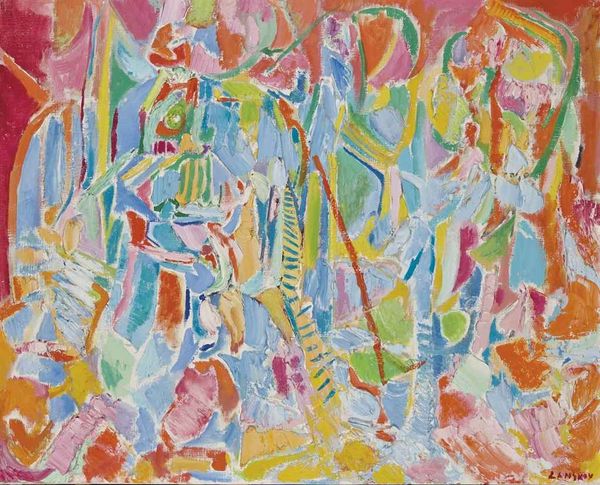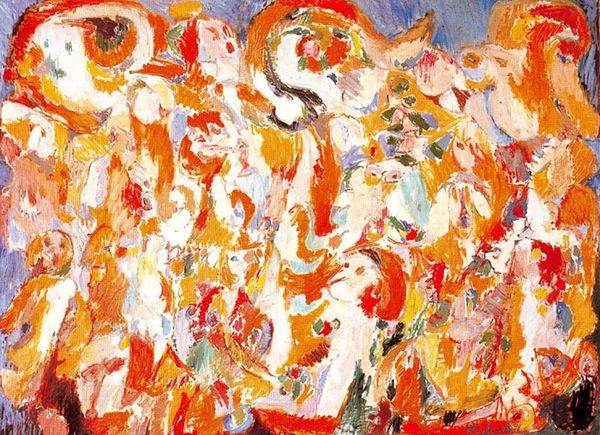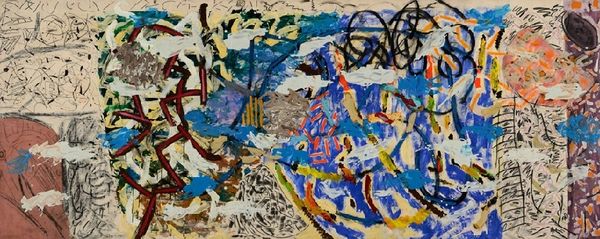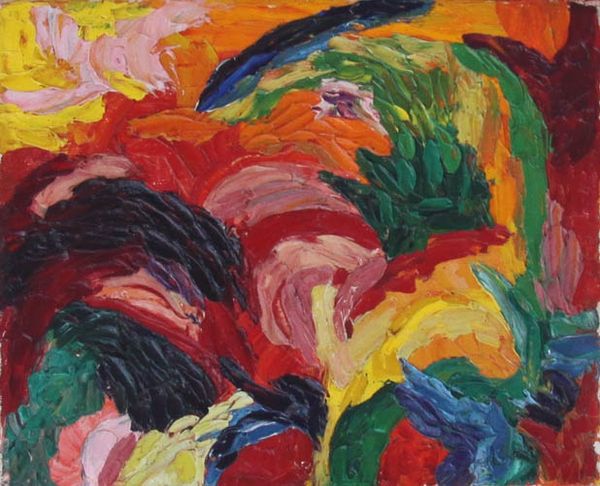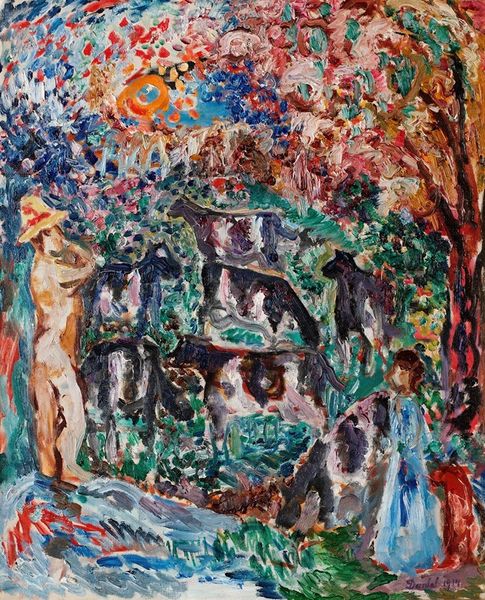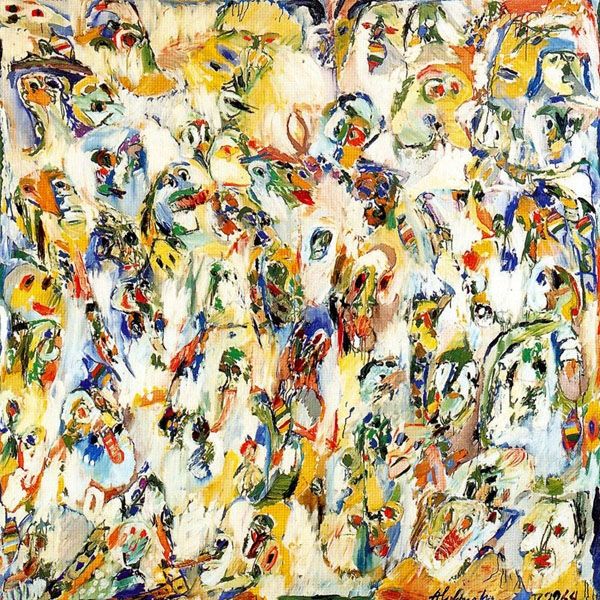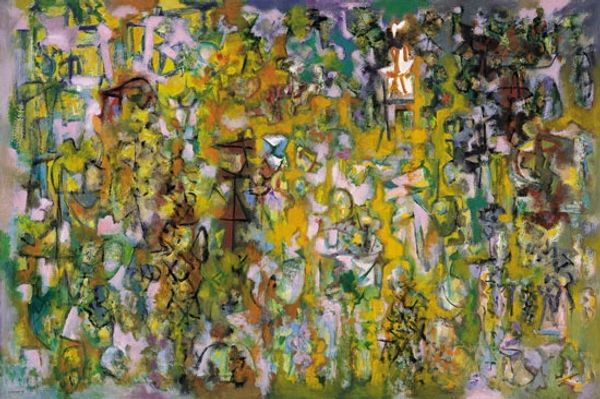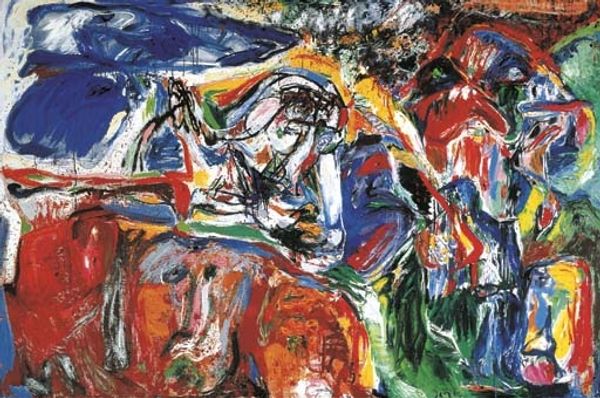
Copyright: Gillian Ayres,Fair Use
Curator: Look at this vibrant dance of colour, folks. This is "Antony and Cleopatra," painted by Gillian Ayres in 1982. You'll find it here at the Tate Modern. It's a grand splash of acrylic on canvas. Editor: Whoa, chaos! It feels like a visual earthquake happened on the canvas, scattering a whole box of gummy bears! Seriously, the first impression is loud, juicy... maybe a bit much? Curator: Well, Gillian Ayres was very much involved with Colour Field painting and Abstract Expressionism, these movements celebrate the raw energy and emotional power of color itself. The thick impasto application certainly adds to that immediacy. Editor: Immediacy, definitely. It’s almost confrontational, demanding attention. But what's with the title? "Antony and Cleopatra?" Are we supposed to see two doomed lovers in this swirl of oranges and blues? Because frankly, I mostly see breakfast cereal. Curator: The title creates an interesting tension. Ayres often referenced mythology and literature, providing a kind of key, or maybe a playful red herring. It encourages viewers to look for echoes of that tragic love story, perhaps in the intense passion suggested by the colours, or the sense of impending doom hinted by the darker shades. It’s not about direct representation. Editor: So, it's more about the emotional resonance of the story then, influencing her process... Okay, I can dig that. Thinking about Shakespeare, it DOES evoke a sort of lavish, over-the-top, doomed romance kind of feeling. I mean, imagine them drowning in a sea of acrylic paint... tragically beautiful, in a messed-up way! Curator: Precisely! Ayres’s work also fits into a post-war art historical context where pure abstraction becomes a valid subject to be observed in galleries, a shift from conventional academic themes and standards. Editor: It's wild how just throwing paint around can carry so much weight, and context, right? Knowing that helps me engage with this chaos instead of just running away from it. Still thinking about cereal, though. Curator: Art has this magic power, doesn't it, of making a seemingly random canvas into a vessel of human stories. I'm grateful to share my analysis on it. Editor: Agreed. It definitely gives you a whole lot to think about, doesn't it? The beauty is truly there and very powerful!
Comments
No comments
Be the first to comment and join the conversation on the ultimate creative platform.
